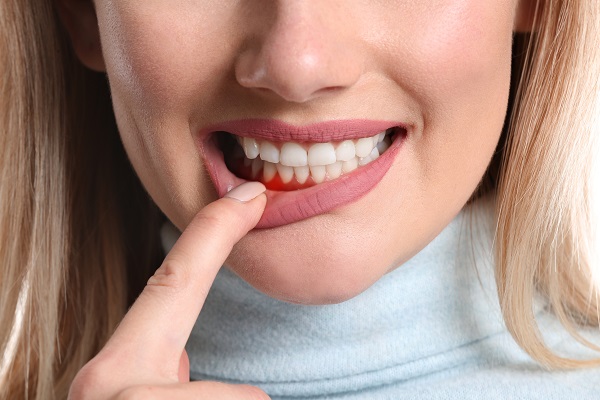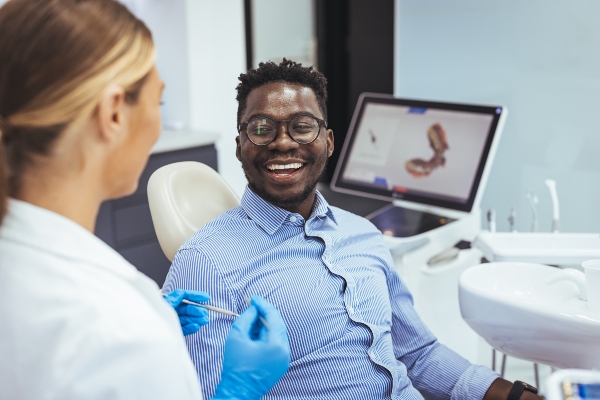Gum Disease Prevention Tips

No one is immune to gum disease. When it comes to oral health, the teeth tend to get more attention than the gums. What many people do not realize is that it is not just about having straight teeth, a white smile, or cavity-free teeth; the gums also need to be in good condition. Knowing the havoc gum disease can wreak on the oral cavity, it is better to take preventive measures to stop the disease from happening.
Preventing gum disease
Gum disease occurs due to the accumulation of plaque along and beneath the gum line. Plaque is a sticky film of bacteria that causes an infection that can damage the gum and bone tissues. Depending on the severity, gum disease can occur as gingivitis or periodontitis, which is the advanced form of the disease. The following are tips for preventing gum disease:
Brush regularly
Patients need to ensure they brush their teeth after every meal, if possible. This helps to clean away food and plaque that may be present around the teeth and gums. The tongue should be cleaned properly as well, as it could harbor bacteria. It is better to use a soft-bristled toothbrush that fits inside the oral cavity comfortably.
An electric or battery-powered toothbrush can help clean plaque and dirt off the teeth more efficiently than manual brushing. The toothbrush or toothbrush head should be replaced every three to four months, or as soon as the bristles begin to fray. When getting toothpaste, patients should consider buying one that contains fluoride and has the ADA’s seal of acceptance. After that, the flavor and color of the toothpaste can be according to personal preference.
Floss
Flossing is important, at least once every day. Flossing helps to remove plaque and food debris that is between the teeth or in hard-to-reach areas inaccessible when brushing. There is no need to have a specific time for flossing; regardless of the timing, the most important point is to undertake the process meticulously and regularly.
Visit the dentist for dental cleanings
Early detection of gum disease symptoms is possible if patients visit a dental office regularly. This will allow the dental professional to treat the condition promptly before it worsens. Professional cleaning is the most effective way to clean hardened plaque from the teeth or debris that might have been missed when brushing or flossing. In the early stage of gum disease, brushing, flossing, and routine dental cleanings can stop and reverse the progress of the disease.
Use mouthwash
Antibacterial mouthwash is available over the counter. These dental rinses reduce plaque, stop gingivitis, and reduce bacteria in the mouth. Mouthwash also helps to clean food remnants from the mouth, but it should not be a replacement for brushing and flossing unless they are not convenient. The mouthwash should have the ADA seal to show that it has been tested for safety and effectiveness.
In conclusion
When you visit the dentist for a routine checkup, they may also recommend certain lifestyle changes like quitting smoking and reducing alcohol consumption, since these may increase the risk of gum disease. If you would like to know more, book an appointment for a consultation.
Get more information here: https://www.carolinasmilesdentist.com or call Carolina Smiles Family Dental at (828) 974-3326
Check out what others are saying about our services on Yelp: Read our Yelp reviews.
Recent Posts
A smile makeover can be achieved with the help of one procedure or several. What a dentist recommends depends on the attributes of your smile you would like to change. To give you a better picture of some treatments that can transform a smile, take a look at these five popular treatments.Slight to moderate misalignments…
Having a healthy and attractive smile not only transforms your appearance but also boosts your confidence. A smile makeover combines cosmetic dental procedures that are tailored to your unique needs and treatment goals. If you have been wondering if you have been contemplating whether a smile makeover is right for you, here are five reasons…
Dental implants feel and function just like natural teeth, and they can last a lifetime. An implant is a rod or screw that is placed in the jawbone. It is usually made out of titanium, but it can also be made out of zirconium.Dental implants replace missing teeth roots, and restorations like crowns are placed…
Getting a smile makeover means getting at least one type of cosmetic dental treatment. You may want to improve your smile, but along with these treatments is the benefit of better oral health. Finding out more about this makeover can help you make informed decisions. Here are the details to consider about a smile makeover.The…


